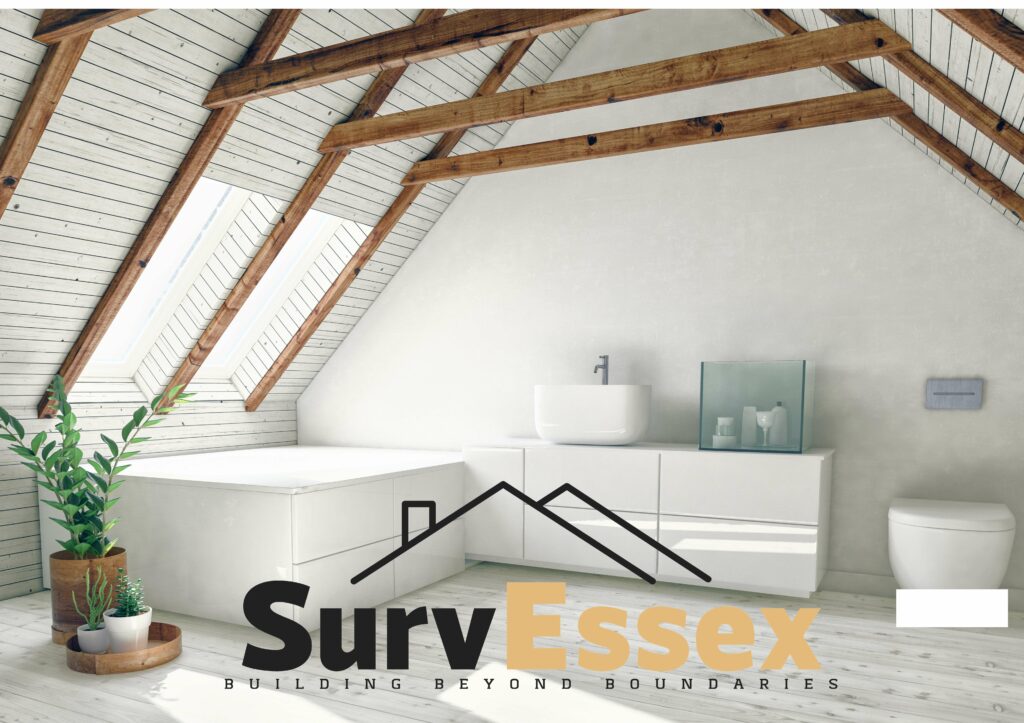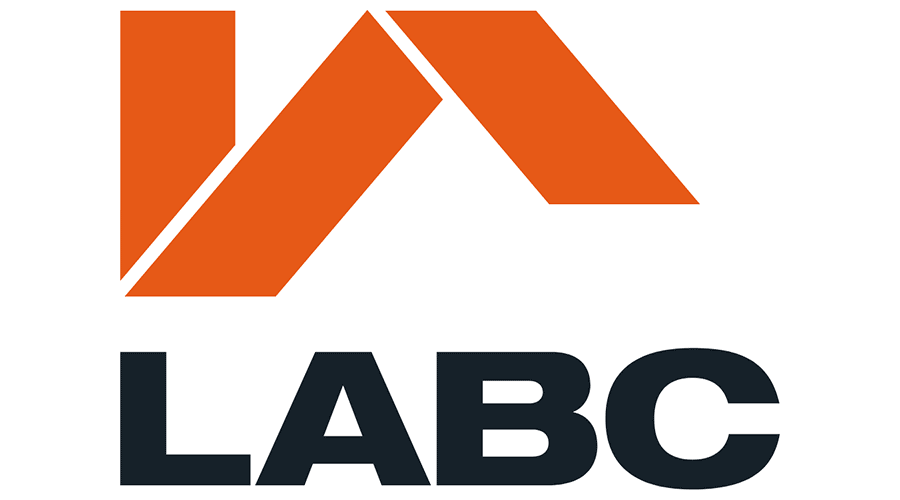Loft Conversion Plans | Planning & Building Regulations Drawings For Loft Conversions
Need Loft Conversion Plans?
Get Yours in 5 Days!
No waiting, no hassle—we deliver fully compliant Loft Conversion Drawings in just 5 working days.
Plus, we handle all the paperwork, submit everything to the council, and even liaise with them so you don’t have to.
And the best part? Our prices start at just £795 fully surveyed. So let’s get your project moving!
01375 267 277
Fast-Track Your Dream Loft Conversion Project
Picture your ideal home, coming to life without the hassle of hunting for a reliable architectural firm for your loft conversion plans.
Our sharp loft conversion drawings speed through approvals with ease.
Say goodbye to hold-ups and confusing paperwork—enjoy a clear, straightforward path to your perfect upgrade.
With fixed prices, unlimited changes, and guaranteed approval support, you can focus on creating the home you’ve always wanted.
100% Risk Free Service

WE HANDLE EVERYTHING
Loft conversion plans made simple. We handle all the drawings and council paperwork for you.

FIXED PRICE GUARANTEE
Budget confidently with our fixed price guarantee, agreed up front before we start work.

UNLIMITED REVISIONS
Unlimited drawing revisions, and in the unlikely event of a council rejection, a completely free re-submission into your local authority.
Top-Quality Loft Conversion Plans at Affordable Prices
Finding it tough to locate a decent Loft Conversion Plans service? Our cost-effective, top-notch loft conversion plans make the approval process a breeze, letting you kick off your home makeover smoothly and quickly, without any unnecessary stress or delays.
Project Portfolio
Showcase of Recent Projects
Explore some of our latest projects where innovation meets practicality. Each project showcases our commitment to exceptional design and meticulous execution. From modern residential homes to sophisticated commercial spaces, we pride ourselves on delivering results that not only meet but exceed our clients’ expectations. Dive into the details of what we’ve been creating and see how we bring visions to life.

Designs and Drawings Portfolio
A Closer Look at Our Architectural Drawings
Dive into our Design and Drawings Portfolio for an in-depth view of our work.
In this section, you’ll find a selection of our architectural drawings and designs, offering a closer look at how we translate ideas into detailed plans and visuals.
Each drawing reflects our commitment to precision and creativity, showcasing the range and quality of our projects. Explore these examples to see how we bring our clients’ visions to life, from initial concepts to finished designs.
Why Choose Surv Essex for your Loft Conversion Plans

Fixed Prices
Our pricing is 100% transparent, so you know exactly what you’ll pay upfront—no hidden fees, no last-minute costs.

Fast Turnaround
Get fully compliant, accurate Loft Conversion Plans in just 5 working days—because we know time is money.

We Handle Everything
We provide the drawings, handle all of the council forms and submit everything into the Council so you don’t have to!

Unlimited Revisions
We offer unlimited drawing revisions, and if your application gets rejected, we’ll resubmit it for free.

Cutting-Edge Technology
We use the latest 3D LaserSCAN tech to ensure precision and compliance, getting it right the first time, every time.

Flexible Appointments
Need flexibility? We offer evening and weekend slots to work around your busy schedule.








What Should I Consider When Ordering Loft Conversion Plans From An Architect or Architectural Designer?
- Do choose experience that gets results.
Work with the best! We’re the 2024 BUILD Magazine winners for “Best Architects and Party Wall Surveyors in the East of England.” Your project is in expert hands.
- Do lock in a fixed price.
No hidden fees, no surprises—just clear, upfront pricing to take your project from planning to build.
- Do agree on fees up front—no headaches later!
Everything is agreed up front, so you won’t face unexpected costs. Simple, straightforward, and stress-free.
- Don’t settle for delays.
Time is money. Get fast, reliable service, so your project moves forward without a hitch.
- Don’t leave anything to chance.
We handle everything—from drawings to council approvals—guiding you every step of the way with complete confidence.
Book Your Loft Conversion Plans TODAY!
Call 01375 267 277

FAQ
Loft Conversion Plans
Loft conversion plans are detailed architectural drawings and documents that outline the process of converting your loft into a functional living space. These plans are crucial because they provide a clear blueprint for the conversion, ensuring that every aspect of the project is carefully considered and meets all necessary regulations. Loft conversion plans typically include floor plans, structural drawings, and details on how the space will be insulated, ventilated, and accessed.
The importance of loft conversion plans cannot be overstated. Without well-prepared plans, you risk running into issues during construction, such as structural weaknesses, non-compliance with building regulations, or unforeseen costs. Additionally, loft conversion plans are often required when applying for planning permission or building control approval. They help ensure that your loft conversion is safe, legal, and aligned with your vision for the space.
At SurvEssex, we specialise in creating comprehensive loft conversion plans that cater to your specific needs. Our expert team will work closely with you to develop plans that not only maximise the potential of your loft but also comply with all relevant regulations, ensuring a smooth and successful project.
There are several types of loft conversions available, each with its own set of considerations that will impact the planning process. The main types include dormer loft conversions, hip-to-gable conversions, mansard loft conversions, and roof light conversions. Each type of conversion has different structural requirements and design implications, which must be reflected in the loft conversion plans.
Dormer Loft Conversions: This is one of the most popular types, where an extension is built from the existing roof to create additional floor space and headroom. Dormer conversions require detailed plans that outline the new structure, including the extension of the roof and the addition of windows.
Hip-to-Gable Conversions: This type of conversion is ideal for properties with a hipped roof. It involves extending the gable end of the roof to create more internal space. The plans for a hip-to-gable conversion need to address the structural changes to the roof and the impact on the external appearance of the house.
Mansard Loft Conversions: Mansard conversions involve raising the party wall and altering the roof slope to create a flat roof with vertical walls. These conversions offer the most space but require significant structural work, which must be meticulously detailed in the plans.
Roof Light Conversions: This is the least invasive type of loft conversion, as it involves adding skylights and reinforcing the existing floor without altering the roof structure. While simpler, the plans still need to address insulation, access, and safety.
The type of loft conversion you choose will significantly impact the complexity of the loft conversion plans. At SurvEssex, we provide expert guidance on selecting the right type of conversion for your property and create detailed plans that reflect the specific requirements of your chosen design.
Whether or not you need planning permission for a loft conversion depends on the specifics of your project and the regulations in your area. In many cases, loft conversions can be carried out under permitted development rights, meaning you do not need to apply for planning permission. However, certain conditions must be met, such as the conversion not exceeding a specified volume or altering the roofline beyond certain limits.
If your loft conversion involves significant changes to the exterior of your property, such as adding a large dormer or altering the roof shape, you may need to apply for planning permission. Additionally, if your property is located in a conservation area or is a listed building, planning permission will almost certainly be required.
The loft conversion plans you submit as part of your planning application must clearly demonstrate that the proposed work complies with all relevant planning regulations. This includes showing how the conversion will fit within the existing structure, how it will affect the external appearance of the property, and how it will meet building control requirements.
At SurvEssex, we can help you determine whether your loft conversion requires planning permission and guide you through the application process. Our team will ensure that your loft conversion plans are fully compliant and increase the likelihood of a smooth approval process.
A comprehensive set of loft conversion plans should include all the necessary details to guide the construction process and ensure compliance with building regulations. Key elements that should be included in these plans are:
Floor Plans: These should show the layout of the loft space before and after the conversion, detailing the new room configurations, locations of windows and doors, and any new internal walls or partitions.
Structural Details: Loft conversion plans must include information on how the existing roof structure will be reinforced or altered to accommodate the conversion. This might involve adding steel beams, reinforcing joists, or altering the roofline.
Insulation and Ventilation: Proper insulation is crucial for maintaining a comfortable temperature in the loft, while ventilation is essential to prevent dampness and ensure good air quality. The plans should specify the type of insulation to be used and how ventilation will be provided.
Access: The plans should include details on how the loft will be accessed, typically through the installation of a staircase. This section should address headroom, safety, and compliance with building regulations.
Fire Safety Measures: Loft conversions must comply with fire safety regulations, which may include installing fire-resistant doors, providing adequate escape routes, and ensuring that the loft is properly compartmentalised.
Electrical and Plumbing Layouts: If your loft conversion includes a bathroom or kitchen, the plans should show the locations of plumbing fixtures and electrical outlets.
SurvEssex ensures that all these elements are included in your loft conversion plans, providing a clear and comprehensive set of documents that will guide your project from start to finish.
Building control plays a crucial role in the loft conversion process, ensuring that all work complies with building regulations and is carried out safely. Building control officers are responsible for reviewing your loft conversion plans to ensure they meet the required standards for structural integrity, fire safety, insulation, and accessibility.
When you submit your loft conversion plans to building control, they will be thoroughly assessed to ensure that every aspect of the conversion is safe and compliant. This includes checking the structural calculations, the adequacy of insulation and ventilation, and the safety of the access points, such as stairs.
Once your plans are approved, building control officers may carry out inspections during the construction process to ensure that the work is being carried out according to the approved plans. If any issues are found, you may be required to make changes to bring the work back into compliance.
At SurvEssex, we work closely with building control authorities to ensure that our clients’ loft conversion plans are approved without delay. Our detailed and accurate plans help to streamline the approval process, allowing your project to proceed smoothly.
Planning a loft conversion involves several key considerations that will impact the success of your project. One of the first things to consider is the type of loft conversion that is best suited to your property. The size, shape, and structure of your loft will influence whether a dormer, hip-to-gable, mansard, or roof light conversion is the most appropriate choice.
Another important consideration is how the loft conversion will be used. Whether you plan to create an additional bedroom, a home office, or a playroom for the kids, the intended use will influence the layout, design, and structural requirements of the conversion. It’s also important to think about access, as installing a staircase will be necessary and can impact the layout of both the loft and the floor below.
Budget is another crucial factor. Loft conversion costs can vary significantly depending on the complexity of the work, the materials used, and the level of finish you desire. It’s essential to have a clear understanding of the costs involved and to plan your budget accordingly.
Additionally, you’ll need to consider the impact on your neighbours, particularly if the conversion involves changes to the external appearance of your home, such as adding dormer windows or altering the roofline. It’s a good idea to discuss your plans with your neighbours early on to address any concerns they may have.
Finally, ensuring that your loft conversion plans comply with planning regulations and building control requirements is essential. At SurvEssex, we can help you navigate all these considerations, providing expert advice and detailed plans that will ensure your loft conversion is a success.
Loft conversion plans differ from other types of home extension plans in several key ways. The most significant difference is that loft conversions involve working within the existing structure of the house, specifically within the roof space. This contrasts with other types of extensions, such as side or rear extensions, which typically involve adding new structures to the property.
Because loft conversions are contained within the existing footprint of the house, the plans must account for the unique challenges of converting an attic space into a functional living area. This includes dealing with limited headroom, ensuring adequate insulation and ventilation, and providing safe and practical access to the new space.
Loft conversion plans also tend to focus more on the structural integrity of the roof, as converting a loft often requires reinforcing the existing structure or adding new support elements, such as steel beams. Additionally, because loft conversions involve working at height, the plans must include specific safety measures, particularly in relation to fire safety and access.
Another key difference is that loft conversions can often be carried out under permitted development rights, meaning that planning permission is not always required. However, the plans must still comply with building regulations, and building control approval is required before the work can commence.
At SurvEssex, we have extensive experience in both loft conversions and other types of home extensions. We can provide detailed plans that address the specific challenges and requirements of your chosen project, ensuring a successful outcome.
The cost of loft conversion plans can vary depending on the complexity of the project and the level of detail required. Generally, the costs include the fees for the architect or designer who will create the plans, as well as any necessary surveys, such as structural or environmental assessments.
For a straightforward loft conversion, the cost of creating the plans might be relatively modest. However, if the conversion involves significant structural changes, such as altering the roof or adding dormer windows, the costs can increase. Additionally, if you require detailed plans for electrical, plumbing, or HVAC systems, these can add to the overall cost.
It’s also important to consider the costs associated with obtaining planning permission, if required. This can include application fees and any additional documentation that may be needed, such as heritage statements if your property is in a conservation area.
SurvEssex offers competitive pricing for loft conversion plans, ensuring that you receive high-quality service at a fair price. We provide a clear and transparent quote upfront, so you know exactly what to expect before any work begins. Our award-winning team is dedicated to delivering plans that meet your needs and budget, helping you turn your loft conversion dreams into reality.
Starting the process of creating loft conversion plans begins with assessing the feasibility of the project. The first step is to evaluate the current state of your loft and consider how you intend to use the space once converted. Think about what kind of room you need—whether it’s an additional bedroom, a home office, or a playroom for the kids. This initial planning phase will help you determine the scope of the conversion.
Next, you should consult with a professional architect or a specialist in loft conversions, like SurvEssex. Our team can provide expert advice on the design and regulatory requirements, ensuring that your conversion is not only practical but also compliant with local planning and building regulations. We will work with you to create detailed loft conversion plans that outline every aspect of the project, from the structural alterations to the interior design.
Once the plans are in place, you may need to apply for planning permission or confirm that your project falls under permitted development rights. After securing any necessary permissions, the next step is to hire a reputable contractor to carry out the work. SurvEssex can recommend trusted professionals to ensure your loft conversion is completed to the highest standards.
An architect plays a critical role in developing loft conversion plans, ensuring that your project is both aesthetically pleasing and structurally sound. The architect’s expertise is particularly important when dealing with the unique challenges of converting a loft space, such as limited headroom, complex roof structures, and the need to integrate the new space seamlessly with the rest of your home.
The first step in the process involves the architect assessing your loft to determine its suitability for conversion. They will take detailed measurements and evaluate the structural integrity of the existing space. Based on this assessment, the architect will develop initial design concepts that maximise the potential of your loft while considering your specific needs and preferences.
Once the basic design is agreed upon, the architect will create detailed loft conversion plans. These plans will include floor plans, structural drawings, and specifications for materials, insulation, ventilation, and access. The architect will also ensure that the plans comply with all relevant building regulations and, if necessary, help you apply for planning permission.
Throughout the construction process, the architect may continue to play a role, overseeing the work to ensure it is carried out according to the approved plans. This can help prevent costly mistakes and ensure that the finished conversion meets your expectations.
At SurvEssex, our experienced architects are experts in loft conversions. We work closely with you to create loft conversion plans that enhance your home’s functionality and value while complying with all necessary regulations.
Loft conversion plans must carefully accommodate structural requirements to ensure the safety and stability of the converted space. Since loft conversions often involve significant alterations to the existing roof structure, it’s essential that the plans address these changes in detail.
One of the primary structural considerations in a loft conversion is reinforcing the floor. Most loft floors are not designed to bear the weight of a living space, so the plans must include details on how the floor will be strengthened. This might involve installing additional joists or steel beams to provide the necessary support.
Another key consideration is the roof structure. Depending on the type of loft conversion, the plans may need to include alterations to the roof, such as raising the ridge line, adding dormer windows, or changing the roof’s pitch. The plans must demonstrate how these changes will be supported structurally, including the addition of any new beams or supports.
In some cases, the existing walls may need to be reinforced to support the additional weight of the conversion, especially if the loft will include heavy fixtures such as a bathroom. The plans should specify how the walls will be reinforced, whether through the addition of steel supports, thicker walls, or other methods.
Finally, the plans must address access to the loft. Installing a staircase can be a structural challenge, particularly in homes with limited space. The plans should detail how the staircase will be integrated into the existing structure, ensuring that it is both safe and compliant with building regulations.
SurvEssex’s team of architects and structural engineers work together to ensure that all structural requirements are fully accommodated in your loft conversion plans, providing peace of mind that your project will be safe, stable, and successful.
While many lofts can be converted into functional living spaces, there are certain limitations that may affect the feasibility of a loft conversion. One of the most significant factors is the height of the loft. For a loft conversion to be practical, there should be at least 2.2 metres of headroom at the highest point. If your loft falls short of this, you may need to consider options such as lowering the ceiling of the room below or raising the roof, both of which can add to the complexity and cost of the project.
The structure of the roof is another important consideration. Traditional roofs with rafters tend to be easier to convert than modern trussed roofs, which are constructed with a web of supports that can be difficult to work around. While it’s possible to convert a trussed roof, it usually requires more extensive structural alterations, such as adding steel beams to support the weight of the roof.
Access is also a key limitation. If there isn’t enough space to install a staircase that meets building regulations, converting the loft may not be feasible. The plans must show that there is sufficient headroom and that the staircase can be safely integrated into the existing structure.
Additionally, some properties are subject to planning restrictions that may limit what can be done with the loft. For example, if your home is in a conservation area or is a listed building, you may face restrictions on altering the roofline or adding dormer windows. It’s important to check with your local planning authority before proceeding with a loft conversion.
At SurvEssex, we can assess your loft to determine whether it’s suitable for conversion and help you navigate any limitations. Our team will work with you to develop plans that maximise the potential of your loft while staying within the bounds of feasibility and compliance.
A mansard loft conversion is a type of loft conversion that involves altering the roof structure to create a flat roof with nearly vertical walls, typically at a 70-degree angle. This type of conversion is named after the French architect François Mansart, who popularised this style in the 17th century. Mansard loft conversions are often chosen for their ability to maximise the usable space within a loft, creating a large, open room that can be used for various purposes.
Mansard loft conversions are one of the most extensive types of loft conversions, as they involve significant structural changes to the roof. The process typically includes raising the party wall (the wall shared with a neighbouring property) and building a new roof with steep sides. This allows for more headroom and floor space compared to other types of loft conversions, making it an attractive option for homeowners looking to create a substantial addition to their home.
However, because of the significant alterations involved, mansard loft conversions almost always require planning permission. The changes to the roofline can affect the appearance of the property and may impact neighbouring properties, so it’s important to submit detailed loft conversion plans as part of your planning application. These plans must demonstrate how the conversion will comply with local planning regulations and address any concerns related to the impact on the surrounding area.
At SurvEssex, we have extensive experience in designing and planning mansard loft conversions. Our team can guide you through the planning process, ensuring that your loft conversion plans are fully compliant and that your project proceeds smoothly from start to finish.
Insulation is a crucial component of any loft conversion plan, as it directly impacts the energy efficiency, comfort, and overall success of the conversion. Proper insulation ensures that the new living space remains warm in the winter and cool in the summer, while also helping to reduce energy bills and minimise the environmental impact of your home.
When planning a loft conversion, it’s essential to consider how the space will be insulated. The roof is the most important area to insulate, as a significant amount of heat can be lost through the roof if it’s not properly insulated. There are several types of insulation materials that can be used in a loft conversion, including rigid foam boards, fibreglass batts, and spray foam insulation. Each type has its own advantages and considerations, and the choice of material will depend on factors such as the structure of the roof, the desired level of insulation, and the budget.
In addition to roof insulation, the loft conversion plans should also address the insulation of the walls and floor. If the conversion involves creating new external walls, such as in a dormer or mansard conversion, these walls must be insulated to meet building regulations. Floor insulation is also important, particularly if the loft will be used as a bedroom or living space, to reduce noise and maintain a comfortable temperature.
Ventilation is another important consideration when insulating a loft. While insulation helps to retain heat, it’s also essential to ensure that the loft is properly ventilated to prevent moisture build-up and condensation. The plans should include details on how the loft will be ventilated, such as through the use of roof vents, windows, or mechanical ventilation systems.
At SurvEssex, we ensure that all loft conversion plans include comprehensive insulation details, helping you create a comfortable, energy-efficient living space that complies with all building regulations.
Yes, loft conversion plans should cover all specific elements of the conversion, including stairs and windows, as these are critical components that affect both the functionality and safety of the new space. Properly designed stairs and windows are essential for ensuring that the loft is accessible, safe, and comfortable.
Stairs: The inclusion of stairs in a loft conversion is a key aspect of the design, as they provide access to the new space. The design of the staircase must comply with building regulations, which dictate the minimum headroom, the pitch of the stairs, and the width of the treads and risers. The plans should show the location of the staircase, how it will connect with the existing floors, and how much space it will occupy. In some cases, the placement of the stairs may require structural alterations, such as cutting into the floor below or reinforcing the existing structure to support the new staircase.
Windows: Windows play a crucial role in loft conversions, providing natural light and ventilation. The type and placement of windows must be carefully planned to ensure that the loft is a bright and comfortable living space. Dormer windows, skylights, and Velux windows are common choices in loft conversions. The plans should detail the size, type, and position of each window, as well as how they will be installed within the existing roof structure. It’s also important to consider the impact of windows on privacy, both for the occupants of the loft and for neighbouring properties.
The placement of windows can also affect planning permission requirements, particularly if the windows overlook neighbouring properties or significantly alter the appearance of the roof. Additionally, windows must comply with fire safety regulations, ensuring that they can be used as an escape route in case of an emergency.
SurvEssex’s loft conversion plans include detailed designs for stairs and windows, ensuring that these elements are fully integrated into the overall design and comply with all relevant regulations.
A loft conversion offers several unique benefits compared to other types of home extensions, making it a popular choice for homeowners looking to increase their living space without significantly altering the footprint of their property. Here are some of the key advantages:
Maximises Existing Space: A loft conversion makes use of the existing space within your home, transforming an often-underutilised attic into a functional living area. Unlike other extensions that may take up garden or yard space, a loft conversion adds living space without sacrificing any outdoor areas.
Cost-Effective: Loft conversions are generally more cost-effective than building a new extension because they involve converting an existing space rather than adding new construction. This can make them a more affordable option for homeowners looking to expand their living area.
Increases Property Value: A well-executed loft conversion can significantly increase the value of your home. Adding an extra bedroom, bathroom, or office can make your property more attractive to potential buyers, often resulting in a higher resale value.
Avoids Planning Permission: Many loft conversions can be carried out under permitted development rights, meaning that you may not need to apply for planning permission. This can streamline the process and reduce the time and costs associated with gaining approval.
Versatile Use: Loft conversions offer versatile space that can be adapted to suit your changing needs. Whether you need an additional bedroom, a home office, a playroom, or even a personal gym, a loft conversion can be tailored to meet your specific requirements.
Energy Efficiency: When done correctly, a loft conversion can improve the energy efficiency of your home. By adding insulation and modern materials, you can reduce heat loss through the roof and lower your energy bills.
Less Disruption: Since a loft conversion works within the existing structure of your home, it typically causes less disruption to your daily life compared to other types of extensions. There’s no need to dig foundations or deal with major structural work, making the process quicker and less invasive.
At SurvEssex, we specialise in designing loft conversions that maximise these benefits, helping you create a functional and beautiful space that adds value to your home.
The timeline for completing a loft conversion, including the planning phase, can vary depending on the complexity of the project and whether planning permission is required. However, a typical loft conversion project can be broken down into several key stages, each with its own estimated duration:
Initial Consultation and Design (2-4 weeks): This phase involves discussing your requirements with an architect or designer, conducting a site survey, and developing the initial design concepts. This stage also includes creating detailed loft conversion plans, which will form the basis for the entire project.
Planning Permission (if required) (8-12 weeks): If your loft conversion requires planning permission, this stage involves submitting your plans to the local planning authority and waiting for approval. The timeline for planning permission can vary depending on the complexity of the project and the local authority’s workload.
Building Regulations Approval (2-4 weeks): Whether or not planning permission is required, your loft conversion plans must be approved by building control to ensure compliance with building regulations. This stage typically involves submitting detailed plans and structural calculations for review.
Construction (6-12 weeks): Once all necessary approvals are in place, construction can begin. The duration of the construction phase depends on the complexity of the conversion. Simpler conversions, such as roof light conversions, may take as little as 6 weeks, while more complex projects like mansard conversions can take up to 12 weeks or more.
Final Inspection and Completion (1-2 weeks): After construction is complete, building control will conduct a final inspection to ensure that the work has been carried out according to the approved plans and meets all relevant regulations. Once the final inspection is passed, the project is officially complete.
Overall, a typical loft conversion project can take anywhere from 4 to 6 months from the initial consultation to completion. At SurvEssex, we aim to streamline this process as much as possible, providing efficient project management and expert guidance at every stage.
Obtaining approval for loft conversion plans involves several steps, depending on whether your project requires planning permission, building regulations approval, or both. Here’s an overview of the process:
Step 1: Initial Consultation and Design: The first step is to work with an architect or designer to develop detailed loft conversion plans. These plans should include all necessary information, such as floor plans, structural details, insulation, ventilation, and fire safety measures.
Step 2: Determine Planning Permission Requirements: Once the plans are complete, you’ll need to determine whether planning permission is required. Many loft conversions can be carried out under permitted development rights, meaning that planning permission is not needed. However, if your conversion involves significant changes to the roofline, is in a conservation area, or is a listed building, planning permission will likely be required.
Step 3: Submit Planning Application (if required): If planning permission is needed, you’ll need to submit your loft conversion plans to the local planning authority. The application process typically involves filling out forms, paying a fee, and providing detailed plans and supporting documents. The planning authority will then review the application and may consult with neighbours and other stakeholders.
Step 4: Obtain Building Regulations Approval: Regardless of whether planning permission is required, all loft conversions must comply with building regulations. You’ll need to submit your loft conversion plans to building control for review. This may involve providing additional documents, such as structural calculations or fire safety plans. Building control will assess the plans to ensure they meet all necessary standards.
Step 5: Await Approval: The approval process for both planning permission and building regulations can take several weeks. If any issues are identified, you may be asked to revise your plans and resubmit them.
Step 6: Start Construction: Once all necessary approvals are in place, construction can begin. Building control may conduct inspections during the construction process to ensure that the work is being carried out according to the approved plans.
Step 7: Final Inspection and Completion: After construction is complete, building control will conduct a final inspection to ensure that the loft conversion meets all building regulations. Once the final inspection is passed, the project is complete.
SurvEssex provides comprehensive support throughout the approval process, helping you navigate the complexities of planning permission and building regulations to ensure a smooth and successful loft conversion.
Ensuring that your loft conversion plans comply with building regulations is essential for the safety, legality, and success of your project. Building regulations cover a wide range of requirements, including structural safety, fire safety, energy efficiency, ventilation, and accessibility. Here’s how you can ensure compliance:
Work with a Qualified Architect: The best way to ensure that your loft conversion plans comply with building regulations is to work with a qualified architect or designer who has experience with loft conversions. They will be familiar with the specific requirements and can create plans that meet all necessary standards.
Incorporate Structural Calculations: Loft conversions often involve significant structural alterations, such as reinforcing the floor or modifying the roof. Your plans must include detailed structural calculations to demonstrate that the proposed changes will be safe and stable.
Address Fire Safety: Fire safety is a critical aspect of building regulations. Your loft conversion plans must include measures to ensure that the loft is adequately protected in case of fire. This might involve installing fire-resistant materials, providing escape routes, and fitting smoke alarms.
Include Insulation and Ventilation Details: Proper insulation and ventilation are required to ensure that the loft is energy-efficient and comfortable. Your plans should specify the type of insulation to be used and how ventilation will be provided, whether through windows, roof vents, or mechanical systems.
Consider Accessibility: If the loft conversion will be used by someone with mobility issues, your plans must include details on how the space will be made accessible. This could involve installing wider doorways, providing adequate headroom, and ensuring that the staircase is safe and compliant.
Submit Plans to Building Control: Once your plans are complete, you must submit them to building control for approval. Building control officers will review the plans to ensure they meet all building regulations. If any issues are identified, you may need to revise the plans before approval is granted.
Follow Approved Plans During Construction: Compliance doesn’t end with the approval of your plans. It’s essential to follow the approved plans during construction to ensure that the finished conversion meets all building regulations. Building control may conduct inspections throughout the construction process to verify compliance.
At SurvEssex, we ensure that all loft conversion plans we create are fully compliant with building regulations. Our team works closely with building control authorities to secure approval and provides ongoing support during construction to ensure that your project is completed to the highest standards.
Choosing the right contractor for your loft conversion is crucial to the success of the project. A skilled and reliable contractor will ensure that the work is completed on time, within budget, and to a high standard. Here are some key considerations when selecting a contractor:
Experience with Loft Conversions: Look for a contractor who has extensive experience with loft conversions. Loft conversions present unique challenges, and an experienced contractor will be familiar with the specific requirements, such as working in tight spaces, reinforcing structures, and ensuring compliance with building regulations.
Check Credentials and References: It’s important to verify the contractor’s credentials, including any licenses or certifications. Additionally, ask for references from previous clients and follow up to ensure that the contractor has a track record of successful projects.
Review Portfolio of Work: Ask to see a portfolio of the contractor’s previous loft conversions. This will give you an idea of their workmanship and attention to detail. It’s also helpful to visit a completed project in person if possible.
Obtain Detailed Quotes: Get detailed quotes from multiple contractors before making a decision. The quote should include a breakdown of all costs, including materials, labour, and any additional fees. Be wary of quotes that seem unusually low, as they may not include all necessary expenses.
Ensure Clear Communication: Effective communication is essential for a successful project. Choose a contractor who is responsive, listens to your needs, and is willing to explain the process in detail. Clear communication helps to prevent misunderstandings and ensures that everyone is on the same page.
Verify Insurance Coverage: Ensure that the contractor has adequate insurance coverage, including liability insurance and worker’s compensation. This protects you from any potential legal or financial issues if something goes wrong during the project.
Check for Warranties and Guarantees: A reputable contractor should offer warranties or guarantees on their work. This provides peace of mind that the work will be completed to a high standard and that any issues will be addressed.
Understand the Contract: Before signing a contract, make sure you understand all the terms and conditions. The contract should include details such as the scope of work, payment schedule, start and completion dates, and procedures for handling changes or disputes.
At SurvEssex, we work with a network of trusted contractors who specialise in loft conversions. We can recommend experienced professionals who have a proven track record of delivering high-quality results, ensuring that your loft conversion is completed smoothly and to the highest standards.
A loft conversion can significantly increase the value of your home, often by adding additional living space that is highly desirable to potential buyers. The extent of the value increase depends on several factors, including the quality of the conversion, the type of space created, and the demand for similar properties in your area.
Increased Living Space: One of the most obvious ways a loft conversion adds value is by increasing the amount of usable living space in your home. Whether you create an additional bedroom, home office, or playroom, the extra space can make your home more appealing to buyers.
Enhanced Property Appeal: A well-designed loft conversion can enhance the overall appeal of your home, making it stand out in the market. Features such as en-suite bathrooms, walk-in wardrobes, or large windows that bring in natural light can make the loft conversion particularly attractive.
Potential for Multiple Uses: The versatility of a loft conversion adds to its value. Buyers are often drawn to homes with flexible spaces that can be adapted to suit their needs. A loft conversion that offers potential for multiple uses, such as a guest room, home office, or personal gym, is likely to be viewed favourably.
Cost-Effective Investment: Compared to other types of home extensions, loft conversions are relatively cost-effective. This means that the return on investment (ROI) is often higher, making it a smart financial decision for homeowners looking to increase their property’s value.
Compliance with Modern Standards: A loft conversion that meets modern building regulations, including energy efficiency and fire safety standards, can be a strong selling point. Buyers are more likely to pay a premium for a home that has been updated to meet current standards.
Impact on Marketability: In a competitive housing market, a loft conversion can make your home more marketable. It provides a unique selling point that can differentiate your property from others on the market, potentially leading to a quicker sale at a higher price.
While the exact value added by a loft conversion can vary, studies have shown that it can increase the value of a property by up to 20%. At SurvEssex, we design loft conversions that not only enhance your living space but also maximise your property’s value, providing a strong return on your investment.
The type of roof structure in your home plays a significant role in determining the feasibility and design of a loft conversion. Understanding the different types of roof structures can help you make informed decisions when planning your loft conversion. Here are the most common types:
Traditional Cut Roofs: Traditional cut roofs are constructed with rafters and purlins, creating a simple and open structure. These roofs are typically easier to convert because they provide more headroom and require fewer structural alterations. The open nature of a traditional cut roof allows for greater flexibility in designing the layout of the loft conversion.
Trussed Roofs: Trussed roofs are more common in modern homes and are constructed with a web of supports (trusses) that distribute the weight of the roof. While trussed roofs are efficient in terms of materials and construction, they can be more challenging to convert because the trusses can obstruct the space. Converting a trussed roof usually requires reinforcing the structure with steel beams to support the weight of the roof once the trusses are removed.
Flat Roofs: Flat roofs are less common for loft conversions but can be converted with the right planning. A flat roof typically requires significant alterations to create enough headroom and ensure proper drainage. In some cases, the flat roof may be replaced or extended to create a more functional space.
Mansard Roofs: Mansard roofs have two slopes on each side, with the lower slope being steeper. These roofs are often associated with mansard loft conversions, which involve altering the roof structure to create a flat roof with vertical walls. Mansard roofs provide more usable space compared to other roof types, making them ideal for loft conversions that require additional headroom and floor space.
Gable Roofs: Gable roofs are characterised by their triangular shape and are common in many homes. These roofs are generally straightforward to convert, especially if the loft space is already substantial. A gable roof allows for the addition of dormer windows or a hip-to-gable conversion to increase the usable space.
The type of roof structure in your home will influence the design, cost, and complexity of your loft conversion plans. At SurvEssex, we assess the existing roof structure and provide tailored recommendations for your loft conversion, ensuring that the plans are both feasible and compliant with building regulations.
Deciding between a loft conversion and a loft extension depends on your specific needs, budget, and the characteristics of your property. Both options offer the potential to increase your living space, but they differ in terms of design, cost, and impact on the property.
Loft Conversion: A loft conversion involves transforming the existing attic space into a functional living area. This option is ideal if you have sufficient headroom and the existing roof structure can support the conversion. Loft conversions are generally more cost-effective than extensions because they work within the existing footprint of the house. They are also less disruptive, as the work is contained within the roof space.
Loft Extension: A loft extension involves expanding the existing loft space by altering the roof structure. This could include adding dormer windows, extending the gable, or building a mansard roof. Loft extensions are typically chosen when the existing loft space is too small or lacks sufficient headroom. While loft extensions provide more flexibility in terms of design and space, they are usually more expensive and may require planning permission.
Budget Considerations: Loft conversions are generally more budget-friendly because they involve fewer structural changes. If you have a limited budget, a loft conversion may be the better option. However, if you need more space and are willing to invest in a larger project, a loft extension may provide a better return on investment.
Planning Permission: Loft conversions often fall under permitted development rights, meaning that planning permission may not be required. In contrast, loft extensions are more likely to require planning permission due to the changes in the roof structure. If you want to avoid the planning permission process, a loft conversion may be the simpler option.
Impact on Property Value: Both loft conversions and loft extensions can add value to your property, but the impact will depend on the quality of the work and the amount of additional space created. A well-designed loft extension may add more value due to the increased floor area, but a loft conversion can also significantly enhance the property’s appeal.
At SurvEssex, we can help you weigh the pros and cons of each option and decide which is best suited to your needs and property. Our team will work with you to develop plans that maximise the potential of your home, whether through a loft conversion or an extension.
Yes, including a bathroom in your loft conversion plans is a popular option that can add significant value and functionality to the space. Adding a bathroom to your loft conversion requires careful planning to ensure that the necessary plumbing, drainage, and ventilation systems are properly integrated.
Plumbing: The first consideration when adding a bathroom to a loft conversion is the plumbing. You’ll need to ensure that there is access to both hot and cold water supplies, as well as a suitable drainage system for waste. If the loft is located far from the existing plumbing system, you may need to install a macerator or pump to facilitate waste removal.
Drainage: Proper drainage is essential for a loft bathroom, particularly if you’re adding a shower or bathtub. The plans should include details on how the drainage pipes will be routed and connected to the main drainage system. It’s important to ensure that the drainage system is efficient and complies with building regulations.
Ventilation: Ventilation is crucial in a bathroom to prevent moisture build-up and mould. Your plans should include details on how the bathroom will be ventilated, whether through windows, roof vents, or an extractor fan. Adequate ventilation is not only a building regulations requirement but also essential for maintaining a healthy and comfortable environment.
Space Considerations: The size and layout of the loft will determine the type of bathroom fixtures you can include. For smaller lofts, a compact bathroom with a shower, toilet, and sink may be the best option. In larger lofts, you might have space for a full bathroom with a bathtub, shower, and additional features like a double sink or storage units.
Heating and Insulation: Ensuring that the bathroom is warm and comfortable is important, particularly in a loft where temperatures can fluctuate. The plans should include provisions for heating, such as underfloor heating or a radiator, as well as insulation to retain heat and reduce energy consumption.
Including a bathroom in your loft conversion can greatly enhance the usability and appeal of the space. At SurvEssex, we ensure that all the necessary elements are carefully planned and integrated into your loft conversion plans, creating a functional and stylish bathroom that meets your needs.
Converting a small loft presents unique challenges, but with careful planning and creative design, it’s possible to create a functional and attractive living space. Here are some common challenges and how they can be overcome:
Limited Headroom: One of the biggest challenges in a small loft is limited headroom, which can make the space feel cramped. To overcome this, consider using clever design solutions such as installing dormer windows or raising the roof to create more vertical space. Choosing low-profile furniture and built-in storage can also help maximise the available headroom.
Maximising Space: In a small loft, every inch of space counts. Consider using built-in furniture and storage solutions that make the most of awkward corners and low ceilings. Custom shelving, under-bed storage, and wall-mounted units can help keep the space organised and free from clutter.
Natural Light: Small lofts can often feel dark and enclosed, especially if there are limited windows. Adding skylights or roof windows can bring in natural light and make the space feel more open and airy. Consider using light colours for walls and furnishings to enhance the brightness of the room.
Access and Layout: In a small loft, finding space for a staircase can be challenging. Consider space-saving staircase designs, such as spiral stairs or alternating tread stairs, which take up less room while still providing safe access. The layout of the loft should also be carefully planned to ensure that the space is functional and flows well.
Insulation and Ventilation: Small lofts can be prone to temperature fluctuations, so it’s important to ensure that the space is well-insulated and ventilated. Proper insulation will help maintain a comfortable temperature, while adequate ventilation will prevent condensation and dampness.
Storage Solutions: Storage can be a challenge in a small loft, but with clever design, it’s possible to incorporate plenty of storage space. Consider built-in wardrobes, drawers under the eaves, and multi-functional furniture that doubles as storage.
At SurvEssex, we specialise in designing loft conversions that make the most of small spaces. Our team will work with you to develop creative solutions that maximise the potential of your loft, ensuring that the finished conversion is both practical and stylish.
Fire safety is a critical consideration in loft conversion plans, and it’s essential that the plans include measures to protect both the occupants of the loft and the rest of the house in the event of a fire. Building regulations set out specific requirements for fire safety in loft conversions, and compliance with these regulations is mandatory.
Fire-Resistant Materials: One of the key aspects of fire safety in a loft conversion is the use of fire-resistant materials. This includes fire-resistant plasterboard for walls and ceilings, as well as fire-rated doors. The plans should specify the materials to be used and ensure that they meet the necessary fire safety standards.
Escape Routes: Loft conversions must include a safe and accessible escape route in case of fire. This typically involves providing a staircase that leads directly to a fire escape door or window. The escape route must be protected by fire-resistant materials and should lead directly to a place of safety outside the building. The plans should detail the escape route and ensure that it complies with building regulations.
Smoke Alarms: The installation of smoke alarms is mandatory in loft conversions. The plans should include the placement of smoke alarms on every level of the house, including the loft. Smoke alarms should be interlinked so that if one alarm is triggered, all alarms in the house will sound. This ensures that occupants are alerted to the presence of smoke or fire as quickly as possible.
Fire Doors: Fire doors play a crucial role in containing fire and smoke, giving occupants more time to escape. The plans should include fire doors at strategic points, such as the entrance to the loft and any rooms within the loft. These doors should be self-closing and provide at least 30 minutes of fire resistance.
Windows as Escape Routes: If the loft conversion includes windows that are to be used as escape routes, the plans must ensure that these windows meet the necessary size and accessibility requirements. The windows should be large enough for occupants to climb through and should be easily accessible from the loft.
Compartmentalisation: Compartmentalisation involves dividing the loft into separate areas that are protected by fire-resistant barriers. This helps to contain the spread of fire and smoke, allowing more time for evacuation. The plans should include details on how the loft will be compartmentalised, particularly if the conversion includes multiple rooms.
At SurvEssex, we ensure that all loft conversion plans are designed with fire safety as a top priority. Our team works closely with building control to ensure that all fire safety measures are fully compliant with building regulations, providing peace of mind that your loft conversion is safe for you and your family.
Check Out Our Blogs
Surv Essex Limited
Building 13, Thames Enterprise Centre
Princess Margaret Road
East Tilbury
RM18 8RH
Our socials:
copyriGHT 2024 Surv Essex Ltd



